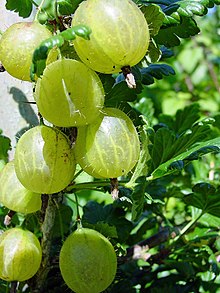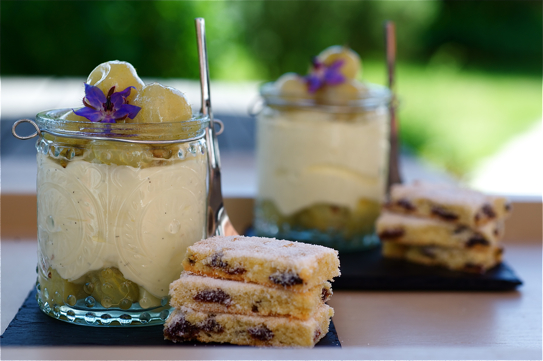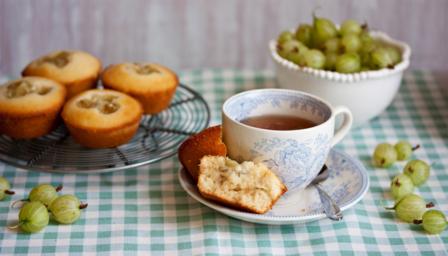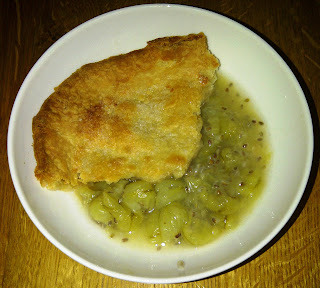sister herb
Official TTI Chef

Eurasian gooseberry

Red gooseberry
The gooseberry with scientific names Ribes uva-crispa (and syn. Ribes grossularia), is a species of Ribes (which also includes the currants). It is native to Europe, northwestern Africa, west, south and southeast Asia. Gooseberry bushes produce an edible fruit and are grown on both a commercial and domestic basis.
Gooseberries are edible and can be eaten as-is, or used as an ingredient in desserts, such as pies, fools and crumbles. Early pickings are generally sour and more appropriate for culinary use. They are also used to flavour beverages such as sodas, flavoured waters, or milk, and can be made into fruit wines and teas. Gooseberries can be preserved in the form of jams, dried fruit, or as the primary or a secondary ingredient in pickling, or stored in sugar syrup. In the UK gooseberries were particularly popular before fruit was imported in quantity from elsewhere, as they constituted the first available fresh fruit of the year.
Etymology
The "goose" in "gooseberry" has usually been seen as a corruption of either the Dutch word kruisbes or the allied German Krausbeere, or of the earlier forms of the French groseille. Alternatively the word has been connected to the Middle High German krus (curl, crisped), in Latin as grossularia. However, the Oxford English Dictionary takes the obvious derivation from goose and berry as probable because "the grounds on which plants and fruits have received names associating them with animals are so often inexplicable that the inappropriateness in the meaning does not necessarily give good grounds for believing that the word is an etymological corruption." It is also perhaps worth noting that the French for gooseberry is groseille à maquereau translated as 'mackerel berries'.
It is also possible that it might be a corruption of "goods berry" (since that is what the Old English fēāberige literally means - see above in 'Distribution'), although what connection there may be to 'goods' is no longer known.
The specific epithet uva-crispa literally means "curved grape".










